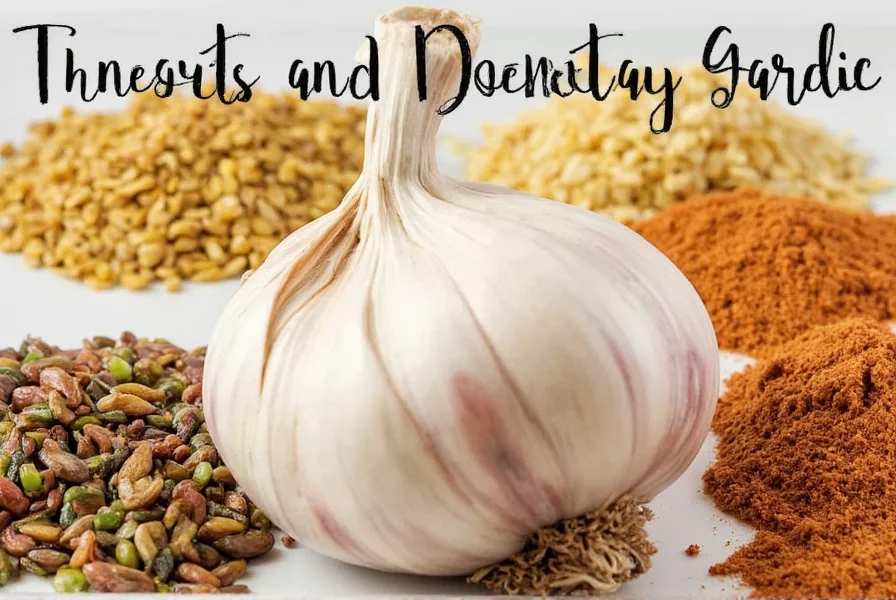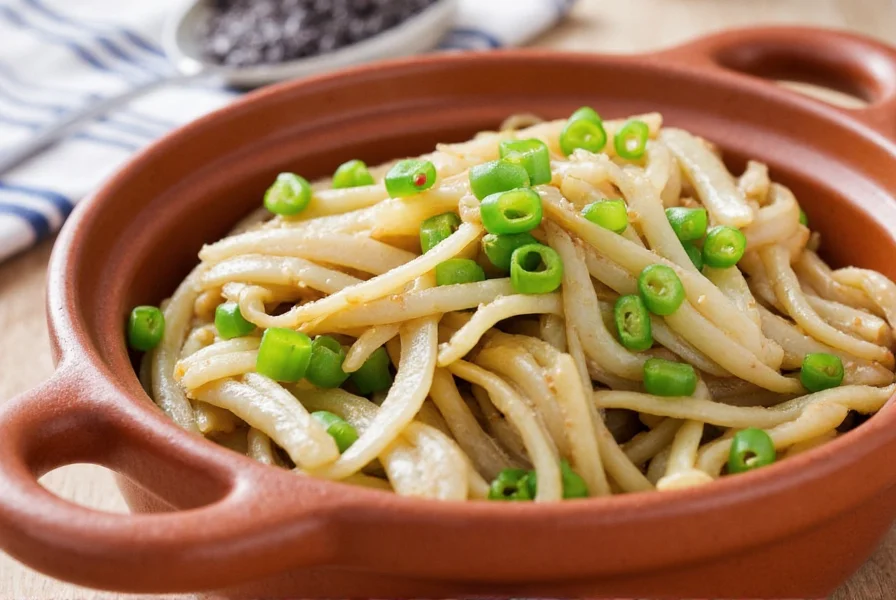Table of Contents
Introduction to Chinese Garlic
Chinese garlic (Allium sativum var. chinense) is a distinct variety known for its intense flavor, robust aroma, and unique physical characteristics. Unlike regular garlic, Chinese garlic typically features larger bulbs with a single ring of cloves around a central stalk, delivering a stronger, spicier taste profile that's essential in authentic Asian cuisine. This guide provides comprehensive information on selecting, storing, and using Chinese garlic to enhance your cooking with authentic flavors.
Whether you're a professional chef or home cook, understanding Chinese garlic's unique properties will help you create more flavorful dishes. Let's explore everything you need to know about this special ingredient.
5 Practical Tips for Using Chinese Garlic
Chinese garlic's powerful flavor requires specific handling techniques to maximize its potential. Here are five essential tips:
- Use it raw for maximum flavor: Chinese garlic has a more intense taste than regular garlic, so adding it raw to dishes like salads or dressings can give your food a bold kick. However, use sparingly as it can easily overpower delicate dishes.
- Mince it finely for even distribution: To ensure every bite has a hint of garlic, mince it finely before adding it to sauces, marinades, or soups. This helps distribute the flavor evenly throughout the dish.
- Roast it for a milder taste: If you prefer a softer, sweeter flavor, roast whole cloves of Chinese garlic until they're golden brown. This method is perfect for spreading on bread or mixing into dips.
- Pair it with bold ingredients: Chinese garlic pairs exceptionally well with spicy, umami-rich foods like chili, soy sauce, fermented tofu, and black bean sauce. Don't be afraid to experiment!
- Store it properly: Keep your Chinese garlic in a cool, dry place away from direct sunlight. Avoid storing it in the fridge unless you plan to use it within a few days, as moisture can cause sprouting or mold.
Buying Guide: How to Choose the Best Chinese Garlic
When shopping for Chinese garlic, look for these key indicators of quality:
| Feature | Description |
|---|---|
| Size and Shape | Look for large, plump bulbs with firm cloves. Avoid soft or shriveled ones. |
| Color | The outer skin should be white or pale yellow. Dark spots or mold indicate poor quality. |
| Smell | Fresh Chinese garlic should have a strong, pungent odor. If it smells stale or sour, it's likely old. |
| Origin | Try to buy from reputable suppliers or farmers who specialize in Chinese garlic. Some popular regions include Sichuan, Hunan, and Yunnan. |
| Price | Higher-quality Chinese garlic may cost a bit more, but it's worth the investment for its superior flavor. |

Once you've selected your garlic, consider how you'll use it. For example, if you're making a traditional Chinese dish like Kung Pao Chicken or Mapo Tofu, you'll want to use fresh, high-quality Chinese garlic to bring out the authentic flavors.
Culinary Uses and Pairings
Chinese garlic isn't just for adding flavor—it's also a key ingredient in many traditional recipes. Here are some popular ways to use it:
- Stir-fries: Add minced Chinese garlic to your stir-fry for a quick burst of flavor. It works especially well with vegetables, seafood, and lean meats.
- Braised Dishes: Chinese garlic is often used in braised dishes where it helps tenderize the meat and add depth to the sauce.
- Sauces and Marinades: Mix minced Chinese garlic with soy sauce, rice vinegar, and sesame oil to create a delicious dipping sauce or marinade.
- Pickles and Fermented Foods: In some regions, Chinese garlic is pickled or fermented, giving it a tangy, complex flavor that pairs well with rice and noodles.
When pairing Chinese garlic with other ingredients, think about balance. Its strong flavor can easily overpower delicate dishes, so it's best used in moderation. However, in bold, hearty meals, it shines as the star of the show.
Comparison Table: Chinese Garlic vs. Regular Garlic
To help you understand the differences between Chinese garlic and regular garlic, here's a quick comparison table:
| Aspect | Chinese Garlic | Regular Garlic |
|---|---|---|
| Taste | Stronger, more pungent | Milder, more balanced |
| Flavor Profile | Spicy, sharp, and slightly sweet | Earthy, mild, and slightly sweet |
| Texture | Firmer, with a crunchier bite | Softer, more tender |
| Usage | Best in bold, spicy, or savory dishes | Versatile—can be used in a wide range of dishes |
| Storage | Lasts longer when stored properly | Can go bad faster if not stored correctly |

This comparison shows that while both types of garlic have their own unique qualities, Chinese garlic is particularly suited for dishes that require a stronger, more distinctive flavor.
Frequently Asked Questions
What makes Chinese garlic different from regular garlic?
Chinese garlic (Allium sativum var. chinense) has a stronger, more pungent flavor profile compared to regular garlic. It's typically larger in size with a firmer texture and a more intense, spicy-sweet taste. The cloves are often arranged in a single ring around a central stalk, whereas regular garlic has cloves arranged in multiple layers. This unique structure contributes to its distinctive flavor characteristics.
How should I store Chinese garlic to keep it fresh?
Store Chinese garlic in a cool, dry place with good air circulation, away from direct sunlight. A mesh bag or wire basket works well. Avoid refrigeration unless you've already peeled or cut the garlic, as moisture in the fridge can cause sprouting or mold. Properly stored, Chinese garlic can last 3-6 months. For longer storage, consider freezing whole cloves or minced garlic in oil.
Can I substitute regular garlic for Chinese garlic in recipes?
Yes, but you may need to adjust quantities. Since Chinese garlic has a stronger flavor, you might need to use slightly less regular garlic to achieve a similar taste profile. For authentic Chinese dishes, Chinese garlic is preferred for its distinctive flavor that's integral to traditional recipes. In non-Chinese dishes, regular garlic may be more appropriate for a milder taste.
Why is Chinese garlic stronger than regular garlic?
Chinese garlic contains higher concentrations of allicin, the compound responsible for garlic's pungent flavor and aroma. The growing conditions in China, including soil composition and climate, contribute to this more intense flavor profile. This makes it particularly well-suited for bold, flavorful dishes where garlic should be a prominent element.
Is Chinese garlic safe to eat raw?
Yes, Chinese garlic is safe to eat raw, though its strong flavor might be overwhelming for some palates. Raw Chinese garlic has the highest concentration of beneficial compounds, but its intense heat can be mellowed by letting minced garlic sit for 10-15 minutes before use, which allows enzymatic reactions to develop more complex flavors.
Why does my Chinese garlic sometimes sprout green shoots?
Sprouting occurs when garlic is stored in conditions that mimic spring (warmth and humidity). The green sprout in the center of the clove is edible but quite bitter. To prevent sprouting, store garlic in a cool, dry place with good air circulation. If sprouting occurs, simply remove the green shoot before using the garlic.
How can I reduce the strong aftertaste of Chinese garlic?
To mellow the strong aftertaste, try roasting or sautéing the garlic first. Adding acidic ingredients like lemon juice or vinegar can also help balance the flavor. For raw applications, soaking minced garlic in cold water for 10 minutes before use can reduce its intensity while preserving flavor.
Does Chinese garlic have health benefits beyond regular garlic?
Both types offer similar health benefits as they contain allicin and other beneficial compounds. Chinese garlic's higher potency may provide slightly stronger effects, but both varieties support cardiovascular health, have antimicrobial properties, and contain antioxidants. The main difference is in flavor intensity rather than fundamental nutritional profile.
Conclusion
Chinese garlic is more than just a spice—it's a flavor enhancer that brings authenticity and depth to your cooking. Whether you're preparing a simple stir-fry or a complex braised dish, this versatile ingredient can elevate your meals in ways you never thought possible.
Remember, the key to using Chinese garlic effectively lies in understanding its strength and knowing when to use it. With the right techniques and pairings, you can unlock its full potential and impress your guests with every dish you create.
So next time you're in the kitchen, don't forget to reach for that bulb of Chinese garlic. It might just be the secret ingredient you've been missing all along.










 浙公网安备
33010002000092号
浙公网安备
33010002000092号 浙B2-20120091-4
浙B2-20120091-4